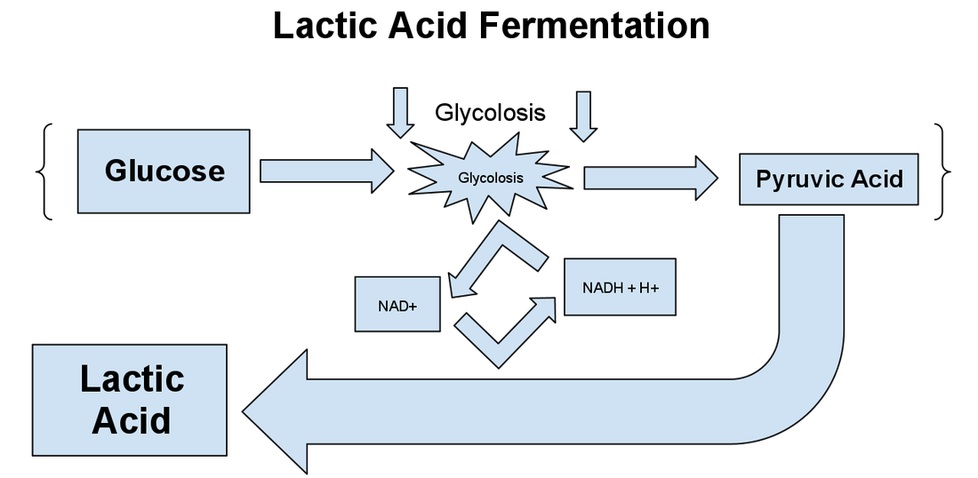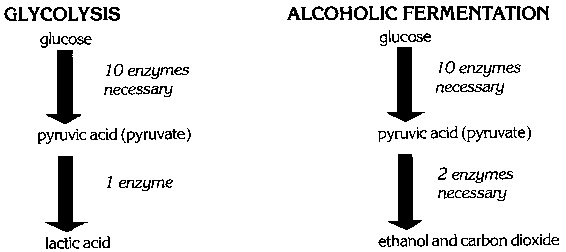Introduction

Lactic Acid Fermentation vs. Alcoholic Fermentation are two of the ways in which the body can utilize energy from the food being eaten. They are both types of anerobic respiration ---> fermentation. No matter what type of fermentation they all begin with the same exact primary step of glycolysis ‘“ splitting glucose to become pyruvic acid. As a result, ATP (adenosine triphosphate) commonly known as the biologic energy needed by the body to survive is produced. Lactic Acid Fermentation, however, doesn't need oxygen, but Alcoholic does need oxygen.
Additionally, not all organisms are forced to have fermentation. There are two types of respiration: anerobic and aerobic. Aerobic requires oxygen, and anerobic does not; both types have many diverse benefits.
Task

The idea is to be able to answer the questions based on the comparison and contrast of Lactic Acid Fermentation and Alcoholic Fermentation Located in the given articles. Have fun!
Process

http://education-portal.com/academy/lesson/lactic-acid-fermentation-def…
1. What is the definition of lactic acid fermentation?
2. What are the products of lactic acid fermentation?
3. What is the chemical formula for this process?

http://www.icr.org/article/glycolysis-alcoholic-fermentation/
1. What is the difference between Alcoholic Fermentation and Glycolysis?
2. What molecules go into Alcoholic Fermentation to produce its products?
3. What are the products of alcoholic fermentation?

http://www.ck12.org/book/CK-12-Biology-I-Honors-CA-DTI3/r1/section/5.3/
(read last few paragraphs, not full webpage, unless you want to! :))
1. What are the major benefits of aerobic?
2. What are the major benefits of anerobic?
3. Which onemproduces more ATP on a regular bases, and which is faster?
Conclusion

Overall, Lactic Acid Fermentation and Alcoholic Fermentation are both anerobic respiration but they have different products, benefits, and limitations. Lactic Acid fermentation results in lactic acid and occurs in the muscles of the body and the bacteria in yogurt. Alcoholic Fermentation results in alcohol and Carbon Dioxide gas and takes place in the fungi yeast, which makes bread rise along with many other purposes.